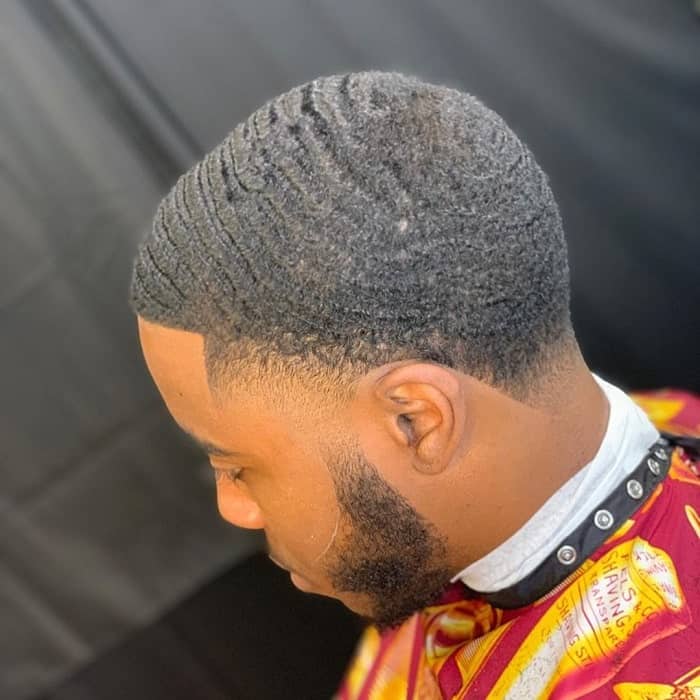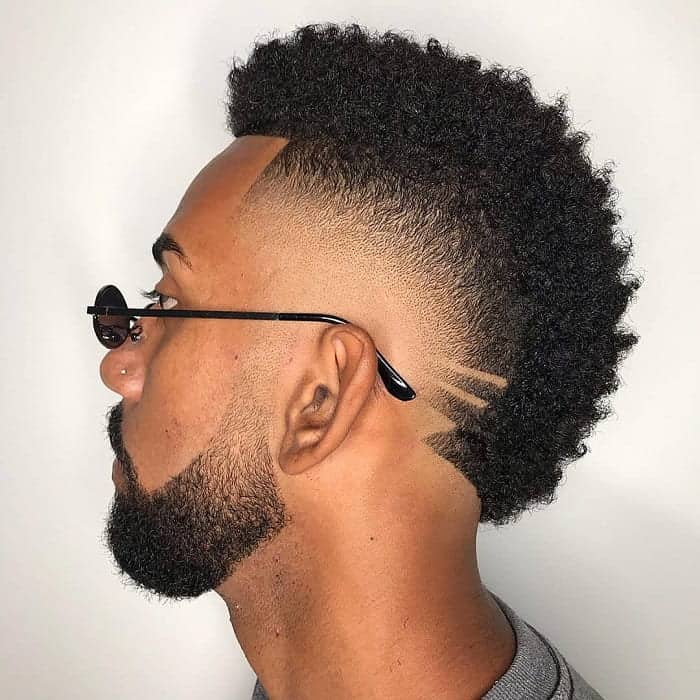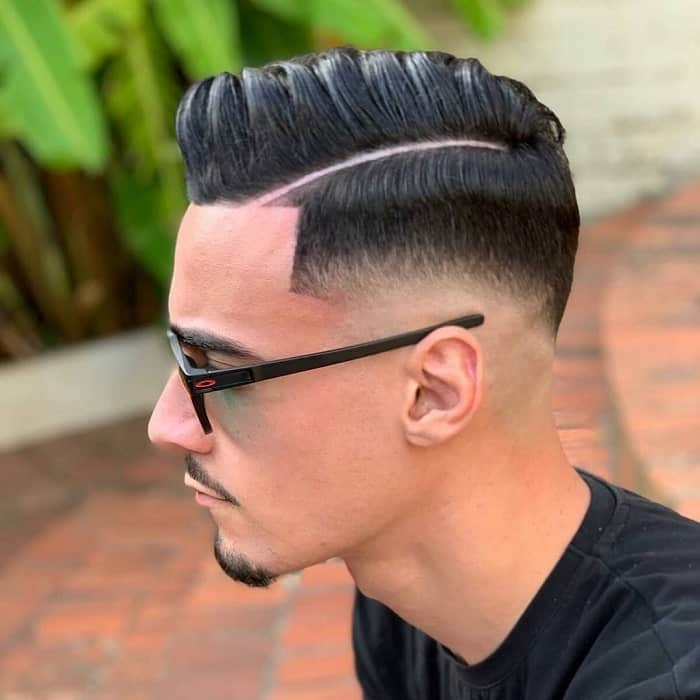The low taper fade haircut has become increasingly popular in recent years, offering a stylish and versatile option for men of all ages. This haircut is characterized by a gradual blending of hair length from the top of the head to the bottom, creating a clean and polished look.
With its low-maintenance requirements and ability to complement a wide range of face shapes and hair textures, the low taper fade has become a go-to choice for those seeking a stylish and sophisticated haircut.
Definition of Low Taper Fade Haircut
A low taper fade haircut is a style where the hair is gradually blended from a longer length at the top of the head to a shorter length at the bottom. This creates a subtle and stylish look that is both professional and easy to maintain.
Blending Technique
The blending technique used in a low taper fade is key to achieving the desired look. The barber will use clippers to create a smooth transition from the longer hair on top to the shorter hair on the sides and back. The length of the hair will gradually decrease as it gets closer to the neckline, creating a tapered effect.
Benefits of a Low Taper Fade Haircut

The low taper fade haircut offers numerous advantages, making it a popular choice for individuals seeking a stylish and versatile hairstyle. Here are some key benefits to consider:
Versatility and Suitability
The low taper fade is a highly adaptable haircut that complements various face shapes and hair textures. It can be tailored to suit oval, round, square, or diamond-shaped faces, enhancing facial features and creating a flattering look.
Enhancing Facial Features
A low taper fade haircut draws attention to the upper portion of the face, highlighting the eyes and cheekbones. By gradually tapering the hair from longer lengths on top to shorter lengths at the neckline, it creates a clean and polished appearance.
Low Maintenance and Easy Styling
The low taper fade is relatively low-maintenance compared to other haircuts. It requires minimal styling effort and can be easily maintained with regular trims to keep the fade sharp.
Complementing Different Hair Textures and Densities
The low taper fade haircut can complement a wide range of hair textures and densities. It works well on thick, thin, curly, or straight hair, providing a customized look that suits individual preferences.
Tips for Requesting a Low Taper Fade
When requesting a low taper fade from a barber or stylist, it’s helpful to provide clear instructions. Specify that you want a low taper fade, starting from a desired point on the head and gradually tapering down to the neckline. You can also indicate the preferred length for the top portion of the hair.
Types of Low Taper Fade Haircuts
Low taper fade haircuts encompass a spectrum of styles, each exhibiting unique characteristics. These styles vary in the length of the fade, its shape, and its placement on the head. Some of the most popular types of low taper fade haircuts include the classic low taper fade, drop fade, and burst fade.
Classic Low Taper Fade
The classic low taper fade is a timeless and versatile style that gradually tapers the hair from the crown to the neckline. It features a smooth transition between the longer hair on top and the shorter hair at the sides and back. The length of the fade can vary depending on personal preference, but it typically starts around the temples and extends down to the nape of the neck.
The classic low taper fade is suitable for all hair types and textures. It can be paired with various hairstyles, including short, medium, and long hair on top. The fade can also be customized with different shapes, such as a straight line or a curved line.
Drop Fade
The drop fade is a more dramatic variation of the low taper fade. It features a sharp, defined line where the hair transitions from longer to shorter. The line is typically placed low on the head, just above the neckline. This creates a bold and eye-catching contrast between the longer hair on top and the shorter hair below the line.
The drop fade is a great choice for those who want a more edgy and modern look. It is particularly suitable for short to medium-length hair on top. The drop fade can also be customized with different shapes, such as a straight line or a curved line.
Burst Fade
The burst fade is a unique and stylish variation of the low taper fade. It features a circular or oval-shaped fade that radiates from the crown of the head. The fade gradually tapers down to the sides and back, creating a subtle and eye-catching effect.
The burst fade is a great choice for those who want a more creative and artistic look. It is particularly suitable for short to medium-length hair on top. The burst fade can also be customized with different shapes and sizes, depending on personal preference.
Styling Techniques for a Low Taper Fade Haircut
Styling a low taper fade haircut requires the right products, tools, and techniques. Experiment with different products to find what works best for your hair type and desired style.
Products
- Pomades provide a strong hold and a sleek, polished look.
- Waxes offer a medium hold with a matte or natural finish.
- Gels create a wet look with a firm hold.
Tools
- Brushes distribute products evenly and create volume.
- Combs define and separate hair strands.
- Blow dryers add volume and texture.
Techniques
- Slicked back: Use a pomade or gel and a comb to create a sleek, sophisticated look.
- Textured: Apply a wax and use a brush or comb to create a messy, textured style.
- Quiffed: Blow dry hair upwards and use a brush or comb to create volume and height at the front.
Maintenance
To keep your low taper fade haircut looking fresh, get regular trims to maintain the shape and length. Wash your hair as needed and use products to style and protect it.
Identify common mistakes to avoid when cutting a low taper fade haircut
Cutting a low taper fade haircut requires precision and attention to detail. To achieve a flawless fade, it’s crucial to avoid common mistakes that can compromise the overall look. Here are some pitfalls to watch out for:
- Uneven fading: Failing to blend the fade smoothly can result in a choppy or uneven appearance.
- Too high or too low: Cutting the fade at the wrong height can disrupt the balance and proportion of the haircut.
- Inconsistent clipper angles: Using inconsistent clipper angles can create visible lines or ridges in the fade.
- Not fading close enough to the skin: Leaving too much hair at the bottom of the fade can make it appear unfinished.
- Using the wrong clipper guards: Choosing clipper guards that are too long or too short can affect the desired length and taper.
By understanding and avoiding these common mistakes, you can ensure a clean and professional-looking low taper fade haircut.
Troubleshooting Problems with a Low Taper Fade Haircut

Cutting a low taper fade haircut can sometimes present challenges. Here are some common problems that may occur, along with solutions and recommendations to resolve them:
Uneven Fade, Low taper fade haircut
- Problem: The fade is not blended smoothly, resulting in noticeable lines or patches.
- Solution: Use a clipper with a fine-tooth blade and work slowly and carefully, gradually transitioning from longer to shorter hair lengths.
Too Much Bulk
- Problem: The hair is too thick or bulky, making the fade appear unnatural.
- Solution: Use thinning shears or a razor to remove excess bulk before blending the fade.
Asymmetrical Fade
- Problem: The fade is not symmetrical on both sides of the head.
- Solution: Use a mirror to check the symmetry regularly and adjust the cutting accordingly.
Too High or Low Fade
- Problem: The fade starts too high or too low on the head.
- Solution: Determine the desired fade height and use a clipper with a guard to ensure precision.
Choppy Lines
- Problem: The fade lines are not smooth or have choppy edges.
- Solution: Use a clipper with a sharp blade and work in small sections, blending the hair carefully.
– Discuss other haircuts that are similar to a low taper fade haircut.

The low taper fade haircut is a versatile and stylish option that can be adapted to suit a variety of face shapes and hair types. However, there are several other haircuts that are similar to the low taper fade, each with its own unique characteristics.
Some of the most popular haircuts that are similar to the low taper fade include the skin fade, bald fade, and shadow fade. These haircuts all feature a gradual transition from short hair at the sides and back of the head to longer hair on top. However, there are some key differences between these haircuts.
Skin Fade
The skin fade is the most extreme type of fade haircut. It features a very short transition from short hair at the sides and back of the head to no hair at all. This creates a very clean and sharp look that is perfect for men who want a low-maintenance haircut.
Bald Fade
The bald fade is similar to the skin fade, but it features a slightly longer transition from short hair to no hair. This creates a more subtle look that is still very stylish and low-maintenance.
Shadow Fade
The shadow fade is the most subtle type of fade haircut. It features a very gradual transition from short hair at the sides and back of the head to longer hair on top. This creates a very natural look that is perfect for men who want a haircut that is both stylish and easy to maintain.
| Haircut | Transition | Maintenance |
|---|---|---|
| Skin Fade | Very short | Low |
| Bald Fade | Slightly longer | Low |
| Shadow Fade | Very gradual | Easy |
Ultimately, the best haircut for you will depend on your personal preferences and hair type. If you are unsure which haircut is right for you, be sure to consult with a professional barber or stylist.
Current Trends in Low Taper Fade Haircuts
Low taper fade haircuts have consistently been a popular choice, and new variations continue to emerge. This hairstyle offers versatility, style, and a clean-cut appearance.
One of the latest trends in low taper fades is the incorporation of intricate designs or patterns shaved into the sides or back of the head. These designs can range from simple lines to complex geometric shapes or even artwork, adding a unique and personalized touch to the haircut.
Asymmetrical Fades
Asymmetrical fades create a striking and edgy look by fading the hair on one side of the head to a different length than the other. This asymmetry adds visual interest and can help to accentuate certain facial features.
Epilogue
In conclusion, the low taper fade haircut is a versatile and stylish option that offers a clean and polished look. Its low-maintenance requirements and ability to complement a wide range of face shapes and hair textures make it a popular choice among men of all ages.
Whether you’re looking for a classic, modern, or edgy haircut, the low taper fade is sure to turn heads and leave a lasting impression.
Answers to Common Questions
What is a low taper fade haircut?
A low taper fade haircut is a gradual blending of hair length from the top of the head to the bottom, creating a clean and polished look.
What are the benefits of a low taper fade haircut?
The benefits of a low taper fade haircut include its versatility, suitability for different face shapes, low-maintenance requirements, and ability to complement different hair textures and densities.
How do I request a low taper fade haircut from a barber or stylist?
To request a low taper fade haircut from a barber or stylist, simply ask for a low taper fade and specify the desired length and shape of the fade.
How often should I get a low taper fade haircut?
The frequency of haircuts will vary depending on the desired length and shape of the fade, as well as the individual’s hair growth rate. However, most people will need to get a low taper fade haircut every 2-3 weeks to maintain the desired look.
